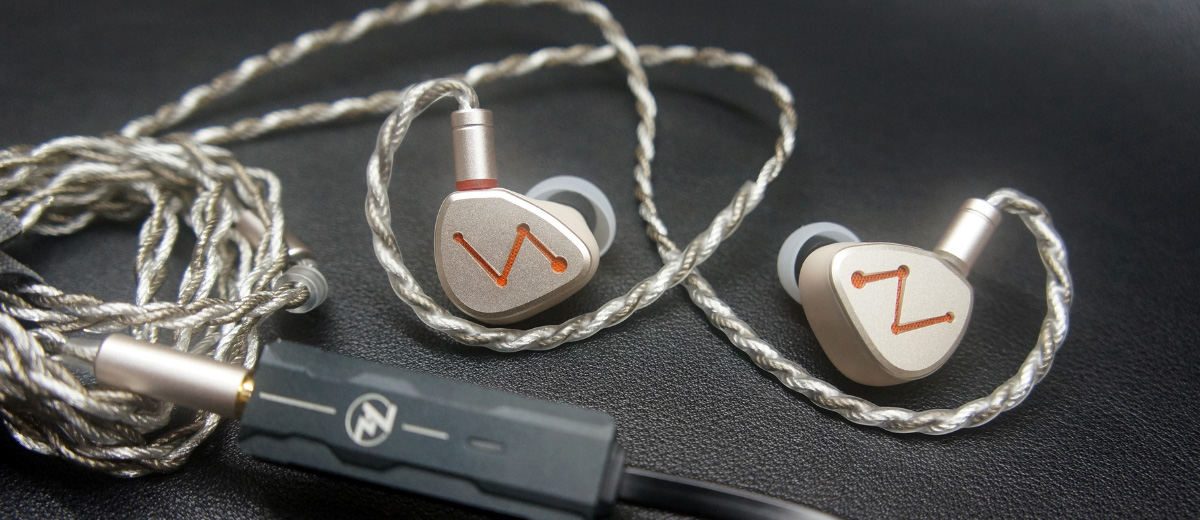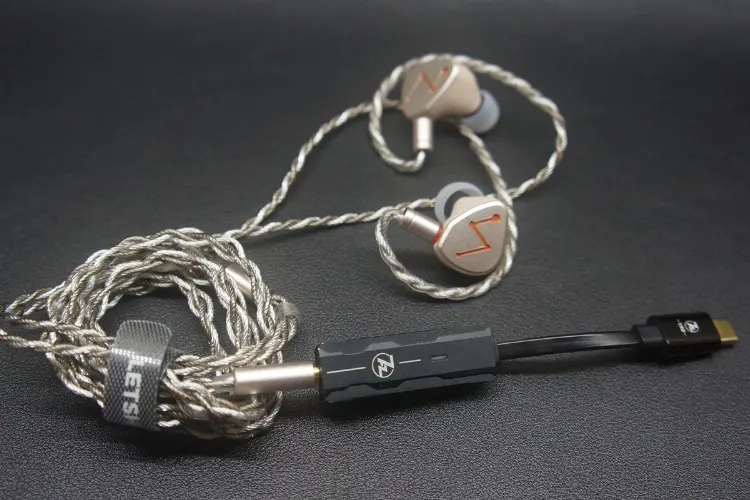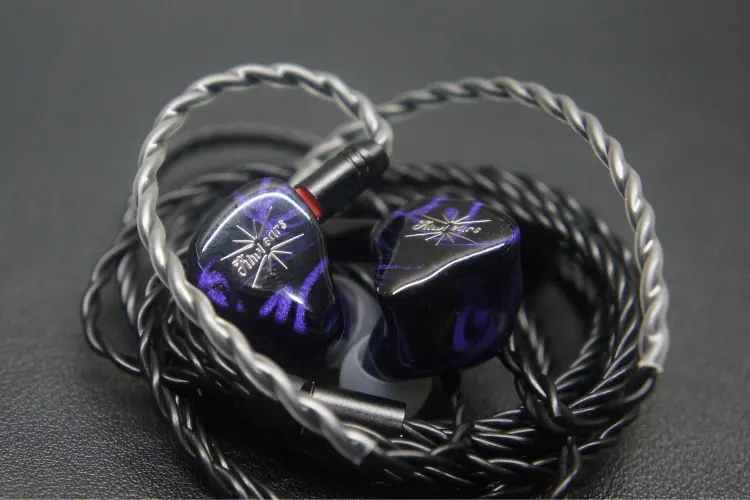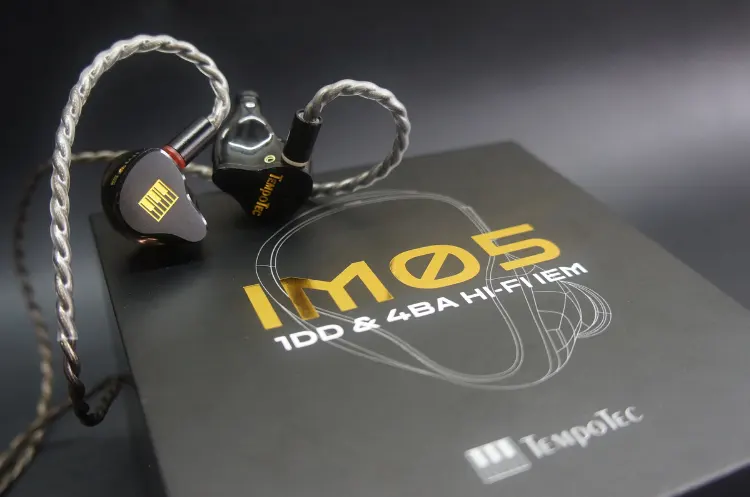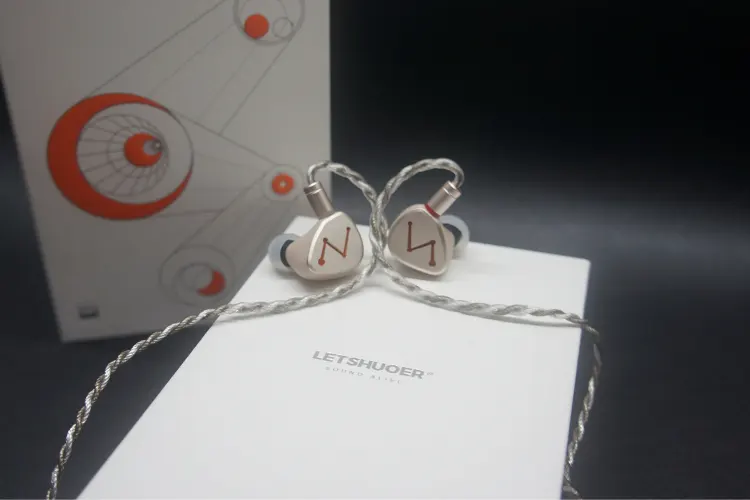Synergy
Efficiency
The DZ4 has a low impedance of 12Ω and a high sensitivity of 104dB, which means it can be driven easily by most devices without any issues.
However, it does benefit quite a bit from a dedicated amplifier or even a dongle. The integrated headphone jack in modern smartphones can drive them to a comfortable volume, but this comes at the cost of sub-par dynamics.
Pairings
Based on my testing, the DZ4 benefits from a warmer or smoother source to tame its treble peaks and add some note body and warmth to its sound. A warmer source like the 7hz SEVENHERTZ 71 dongle was able to mask some harshness from the high-end, making the overall sound signature a little less fatiguing sounding.
Select Comparisons
Kiwi Ears Quartet
Technical
The Quartet uses a dual 10mm dynamic driver and dual balanced armature drivers with an impedance of 32Ω and a sensitivity of 110 dB, whilst the DZ4 uses a triple 6mm titanium dynamic driver and a single 6mm passive radiator.
The DZ4 has an impedance of 12 Ohms and a sensitivity of 104dB, and in practice, both IEMs require around the same amount of power. Additionally, both IEMs make use of the standard 0.78mm 2-pin connector.
Design
The Quartet makes use of a smooth resin shell with a swirled black and purple design with a glossy finish, whilst the DZ4 also makes use of a resin shell, however, it has a much brighter beige color and a matte sandstone finish. The DZ4 also makes use of a CNC aluminum faceplate whilst the Quartet is made from one resin body.
The DZ4 fits slightly better in the ear due to its smaller size, making it slightly more comfortable all around and perfect for all-day listening. However, this does not mean that the DZ4 is uncomfortable by any means, the Witch Pro is simply superior in terms of comfort.
Performance
The Quartet is a V-shaped sound signature that leans more toward the warm side. In terms of both bass quantity and quality, the Quartet’s execution is superior in every way.
Bass hits have more rumble, whilst also having a better sense of texture. Strums from bass guitars are more satisfying and forward in the Quartet, making the DZ4 sound dull in comparison.
The mids are where the DZ4 is able to trade blows with the Quartet. Vocals are more resolving and forward with the DZ4, being able to better playback different pitch changes and other vocal techniques with ease.
However, the Quartet can play back deep male vocals with more body, giving them a more satisfying feel. I can see how listeners would prefer one over the other, but for my tastes (i.e. Hip-Hop and R&B), I prefer the Quartet.
The highs on the Quartet are less resolving than that of the DZ4. Cymbals and snares have a better sense of sparkle and air, but they are also substantially more sibilant.
Additionally, DZ4s slow decay on the high-end gives it a more fatiguing tonality. This makes the Quartet sound more relaxing and pleasurable over the course of a long listening session.
TempoTec IM05
Technical
The TempoTec IM05 uses a single 8mm dynamic driver and four balanced armature drivers with an impedance of 33Ω and a sensitivity of 99dB, whilst the DZ4 uses a triple 6mm titanium dynamic driver and a single 6mm passive radiator.
The DZ4 has an impedance of 12Ω and a sensitivity of 104dB, making the DZ4 easier to drive. Additionally, both IEMs make use of the standard 0.78mm 2-pin connector.
Design
The IM05 makes use of a shell that seems to be constructed from 3D-printed resin with a glossy finish, whilst the DZ4 also makes use of a resin shell, however, it has a much brighter beige color and a matte sandstone finish.
Both the DZ4 and the IM05 make use of a resin shell and a separate metal face plate, with the one on the IM05 having a brushed black metal finish with a stylized yellow piano or TempoTec logo.
The DZ4 fits significantly better in the ear due to its smaller size and lighter build, making it slightly more comfortable all around and perfect for all-day listening. However, this does not mean that the IM05 is uncomfortable by any means, the DZ4 is simply superior in terms of comfort.
Performance
The IM05 has a V-shaped tuning style as opposed to the more neutral approach taken by the DZ4. The bass on the IM05 hits lower and a much more satisfying slam, with also a superior sense of texture and resolution.
The DZ4 is not able to even come close to the toe-tap-inducing Bass guitar playback that the IM05 is known for. To be frank, the bass performance of the IM05 simply blows the DZ4 out of the water.
The mids performance is a completely different story. The DZ4 easily beat out the notoriously sub-par mids performance of the IM05, being able to playback vocals with a substantially better sense of energy and clarity.
In comparison, the vocals on the IM05 sound muffled and the piano and guitar notes on the DZ4 are much better than the IM05 as well.
The treble comparison surprised me a lot, the colder and more analytical tonality of the DZ4 makes the trebles sound more forward, however, I found that the IM05 was more resolving than the DZ4.
Even though I was not able to hear the highs as much, it was easier to pick out the micro-detail on the high-end. There were multiple occasions where the DZ4 came off as sibilant, but this was something I barely observed on the IM05.
Our Verdict
The LETSHUOER DZ4 is an interesting pair of IEMs with a unique, innovative design and excellent build quality. It is relatively comfortable and deals with wear and tear very well.
It has a very cold and analytical sound signature with a very strange decay on both ends of the FR, a potential deal breaker for bass lovers or treble-sensitive listeners.
The bass is tight and punchy, but not very prominent or authoritative, and it’s treble is detailed and airy, but also slightly peaky and forward. It may require some EQ or tip rolling to adjust its sound to your liking.
Personally, I might not meet my own preferences, but I must highlight that very few IEMs are able to deliver a decent neutral, vocal-focused tonality at the price range. If you believe that this level of mids and vocal performance matches your own tastes, then maybe the DZ4 is for you.
LETSHUOER DZ4 Specifications
- Driver Type: Triple dynamic driver + 1 Passive Radiator
- Plug: 3.5mm single-ended standard 0.78mm-2pin
- Frequency Response: 20Hz – 40kHz
- Impedance: 12Ω
- Sensitivity: 104dB

